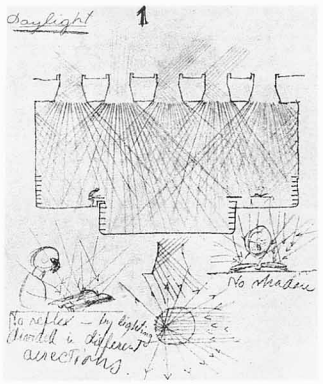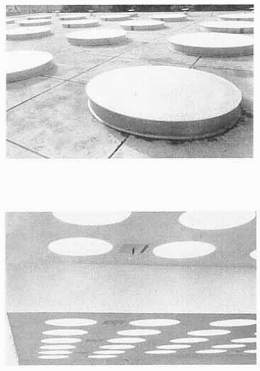The Physics of Skylights
By Katrina Howe
Physics 211
Dr. David Newman
Fall 2013
The Benefits of SkylightsPhysics 211
Dr. David Newman
Fall 2013
| Home |
History | Benefits | Challenges | Styles | Bibliography/Credits |
The obvious benefit to skylights is
that it allows in more natural daylight than side windows
alone. This allows more of the house to be lit naturally
during daylight hours, decreasing the amount of time that
artificial light must be utilized. The less the lights are
on, the less the electric bill is. This tends to be the
chief reason that people install skylights in houses and
other buildings.
The other wonderful thing about skylights is simply that they allow more natural light into your house, period. In places where natural daylight is scarce (like Alaska in the winter) sunlight is a precious thing and people living in such reasons often go to lengths to make the most of what sunlight they get. In these places where Seasonal Affected Disorder is common, employing the use of skylights and everything else is necessary.
Also, natural daylight is easier on one's eyes, and studies have shown that students do better learning in environments with natural daylight versus artificial lighting. (See http://sdpl.coe.uga.edu/research/daylightingstudy.pdf for more information.)
One of my favorite architects, Alvar Aalto of Finland, was a master at working with natural light.
In the library he designed, he specifically planned out the use of skylights and artificial lights in order to reduce the glare on pages of books and make it easier for the patrons to read.


Picture Credits: From pages 8 and 9 (respectively) of http://www-bcf.usc.edu/~kcoleman/Precedents/ALL%20PDFs/Aalto_ViipuriLibrary.pdf

As shown in the drawings above, Aalto used circular skylights to draw the natural daylight into the library.
The other wonderful thing about skylights is simply that they allow more natural light into your house, period. In places where natural daylight is scarce (like Alaska in the winter) sunlight is a precious thing and people living in such reasons often go to lengths to make the most of what sunlight they get. In these places where Seasonal Affected Disorder is common, employing the use of skylights and everything else is necessary.
Also, natural daylight is easier on one's eyes, and studies have shown that students do better learning in environments with natural daylight versus artificial lighting. (See http://sdpl.coe.uga.edu/research/daylightingstudy.pdf for more information.)
One of my favorite architects, Alvar Aalto of Finland, was a master at working with natural light.
In the library he designed, he specifically planned out the use of skylights and artificial lights in order to reduce the glare on pages of books and make it easier for the patrons to read.


Picture Credits: From pages 8 and 9 (respectively) of http://www-bcf.usc.edu/~kcoleman/Precedents/ALL%20PDFs/Aalto_ViipuriLibrary.pdf

As shown in the drawings above, Aalto used circular skylights to draw the natural daylight into the library.
Picture Credit: Page 9 of
http://www-bcf.usc.edu/~kcoleman/Precedents/ALL%20PDFs/Aalto_ViipuriLibrary.pdf
http://www-bcf.usc.edu/~kcoleman/Precedents/ALL%20PDFs/Aalto_ViipuriLibrary.pdf
[Home]